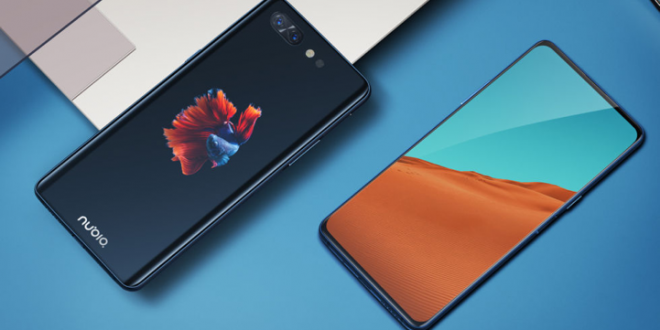I opened YouTube one morning to find this: “Nubia’s X phone ditches front cameras for double displays.”
I was probably the only person freaking out about this. A phone with double displays? That’s the personification of innovation, such as ZTE’s Axon M (2017) that was essentially a Nintendo DS in phone form.
After Apple began manufacturing iPhones with a notch, many android phones have followed: Pixel 3 XL, OnePlus 6, LG G7 ThinQ, Huawei P20 and P20 Pro, Vivo X21, the Essential Phone. It’s the current trend as the journey towards the bezel-less smartphone continues. The only reason it exists is to give a home to the front facing camera, speakerphone and any other sensors that allow features like Face Unlock on Apple and Android devices.
Most notch phones come with the option to turn it off, but now that’s wasted space.
For the time being, companies have done what they can to get rid of it. The Vivo NEX S resorts to a pop-up selfie camera. The Xiaomi Mi Mix 3 has become a slider phone, revealing the front-facing camera by sliding down the display. The Oppo Find X is motorized; the entire top part of the display rises when the camera app is opened, revealing the front and rear camera. The approaching Samsung Galaxy S10 will supposedly have the front facing camera behind the display.
ZTE’s subsidiary Nubia went to the extreme. They pulled a Frieza and declared the notch isn’t their final form by removing the front-facing camera and incorporating another display on the back of their newest phone, the Nubia X. It comes with a Full HD, 6.26-inch nearly bezel-less display on the front and a 5.1-inch display on the back.
Everything about this phone just doesn’t make sense. It has 8GB of RAM, the newest Snapdragon processor, a 24MP camera, a huge battery, two fingerprint sensors and two displays. Even the price point is low when compared to current flagships; this phone is in the $450-600 price range.
The fingerprint readers are indentations, one on each side of the phone. Squeezing them allows you to switch screens. There are also settings that can tweak how you switch screens such as needing to turn off the display before flipping to the other screen or simply flipping the phone while in use.
So, does this classify it as a flip phone?
My only gripe is how the main display is an LCD (screen has a backlight) while the back one is an OLED (each pixel illuminates individually for more vibrant colors).
On Nov. 5, Nubia held a flash sale, selling 100,000 of these devices. They sold out in 57 seconds. While impressive, I’m still stumped as to the reasoning to purchase it. I’m sure anyone with butterfingers feels dread from the thought of having it. I love the design because it’s innovative, but I wouldn’t buy the phone because it’s impractical. I’m usually careful with my phone, but one drop sounds like one of the displays will shatter.
Smartphone case manufacturers probably just got migraines because they must now accommodate the second screen. It was probably even worse for the Axon M since the second screen flipped open. I’m interested to see what’s produced for the Nubia X.
Even though I wouldn’t buy it, the second screen sounds like it brings creative usage possibilities that isn’t just limited to removing the front-facing camera.
Like the PS Vita (yeah, remember that?), you’ll be able to use the back touchscreen as a touchpad when playing games on your phone.
The second screen can be used as an always-on display. This means it will always show the time and date for convenience when the phone isn’t in use; this doesn’t use much battery life since it’s an OLED. The phone effectively becomes a clock once placed face down on a surface. Nubia has also included custom wallpapers where you can have the always-on display show a message. This sounds useful to remind yourself of something motivational, like a bible verse. The hue of the display can also be changed to protect the user from blue light, sleep-stealing light emitted from technological devices.
I’d love to see a mode where you can set up the back display to only have essential apps for when trying to avoid procrastination and get work done. Necessary apps differ from person to person, but It would be cool to limit access to only the time, a calendar, calculator, alarms, voice recorder, and a music controller for pausing and skipping tracks.
I respect Nubia for making this creative decision. I’ve always been curious as to why we have front-facing cameras when rear ones are always better. Who wouldn’t want to take selfies with the more powerful camera? I just didn’t know how to remedy that, but it seems ZTE is always one step ahead. They did the same thing with the Axon M in 2017, but that phone had a clamshell design. The Nubia X is a much more fleshed out concept, but I hope ZTE or future companies make this design practical, freeing us from fears of breaking the second display.
Written by Tristen Petty, Staff Writer. Photo courtesy of Ars Technica.
 The Spectator The independent student newspaper of Valdosta State University
The Spectator The independent student newspaper of Valdosta State University





